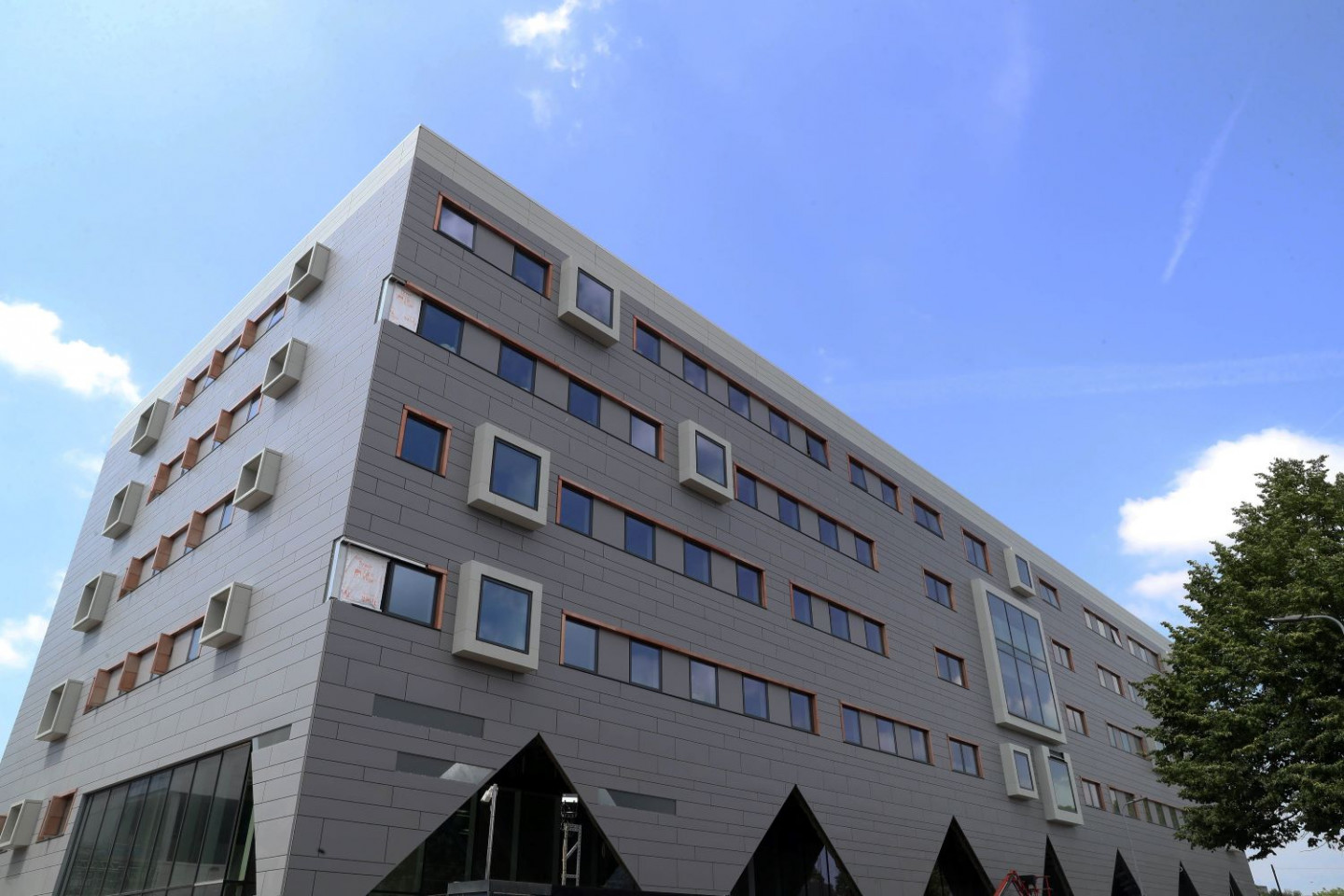Kingspan's Dri-Design was used for Cardiff University's new Abacws building's rainscreen facade, assisted by their K-Roc Karrier to give a supportive and resilient substructure.
The plot selected for the building was located close to Cardiff university’s central campus on Senghennydd Road, across from the Business Technology Centre, the Student Union and the railway station. So, the new building needed to complement the hustle and bustle of the surrounding areas, standing tall with a modern grey tone façade and wide bottom floor windows to create a sunny, airy open space. The façade considers the orientation of the building to allow good daylighting levels all year round whilst also enabling studying students to be shaded on the upper floors if necessary.
A highlight of using the Dri-Design façade to optimise on glazing area and form was the amount of usable space enabled on all floors of the building. Stride Treglown and Adjaye Associates collaborated on this design, which aimed to fill the urban grain along Senghennydd Road. The building’s colonnade has a sheltered route for pedestrians and cyclists, who can see into the insides of the building. Dri-Design was chosen for its high-quality aesthetic and interchangeable cassette types and sizes, in which the function of the rainscreen façade could be combined with creating an architecturally appealing building. The aluminium façade directs condensation from the back through its internal gutter system, which is carried out through the bottom of the wall. This enables the internal wall cavity to be dry, preventing streaking from occurring on the building’s external walls, and leading to relatively low maintenance for the substantial building.
